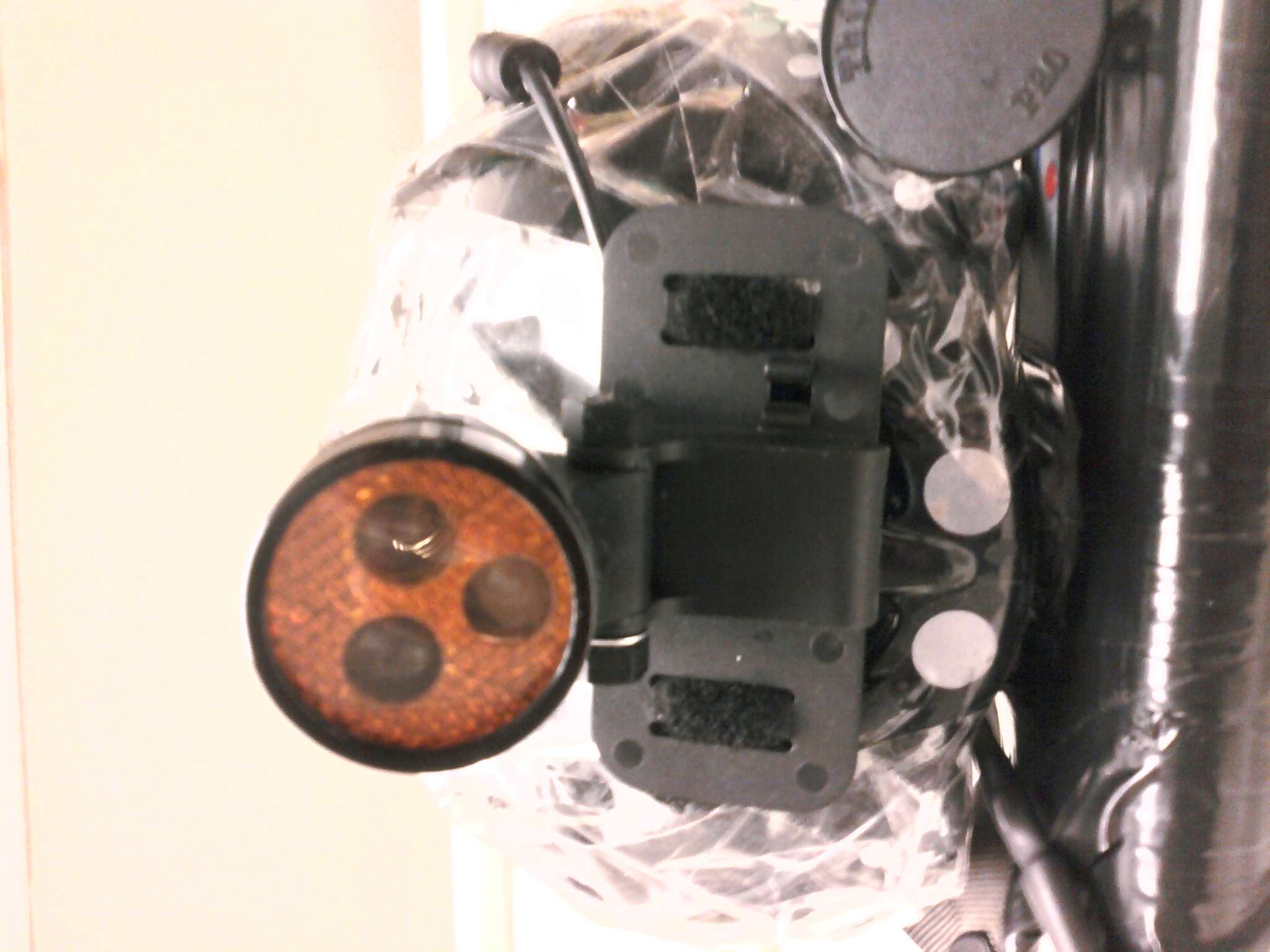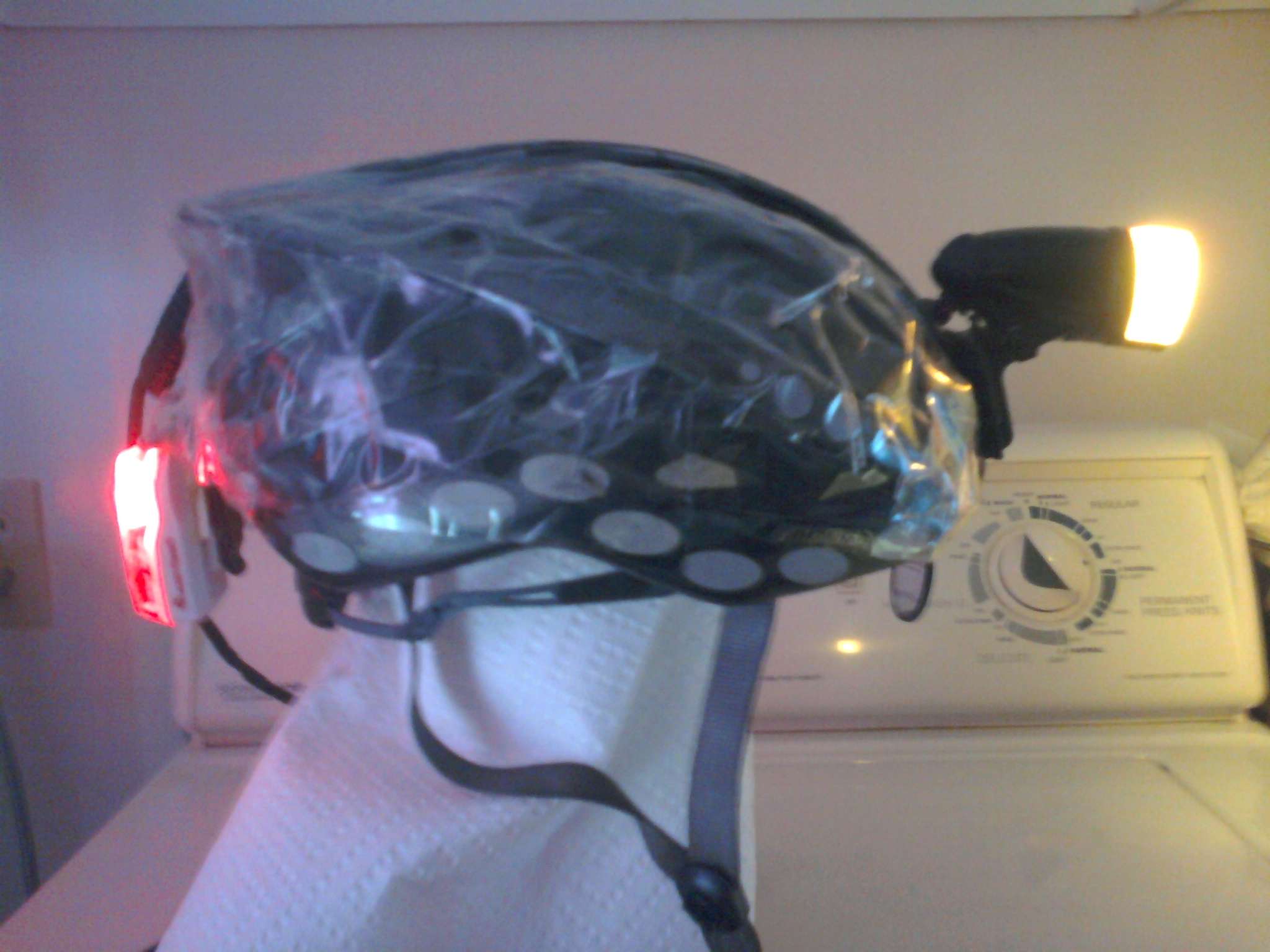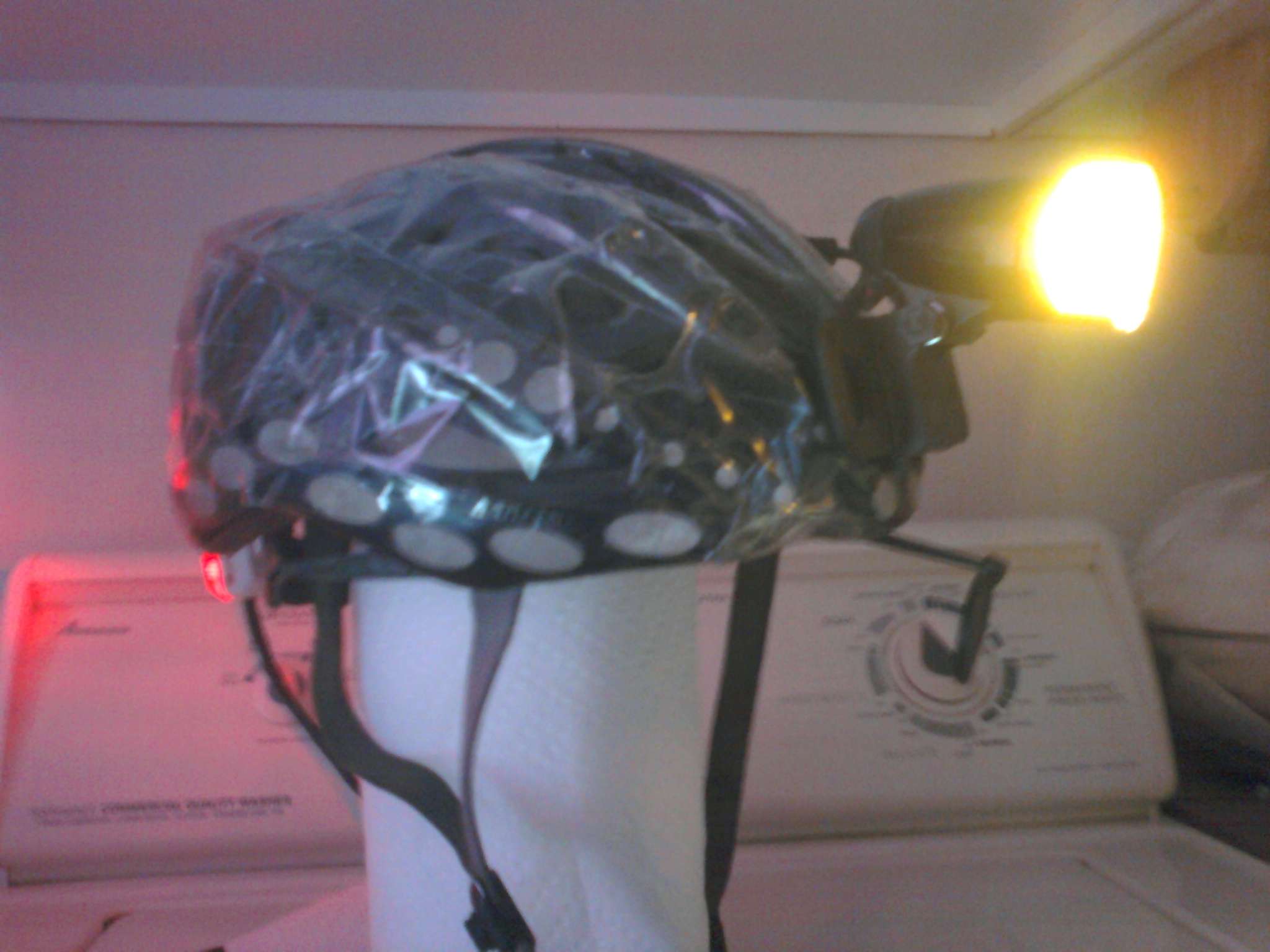BrianMc
Enlightened
- Joined
- Nov 4, 2009
- Messages
- 940
Decided that since this post got eaten, I'd do it as a thread. (Threads survived!)
The bike:
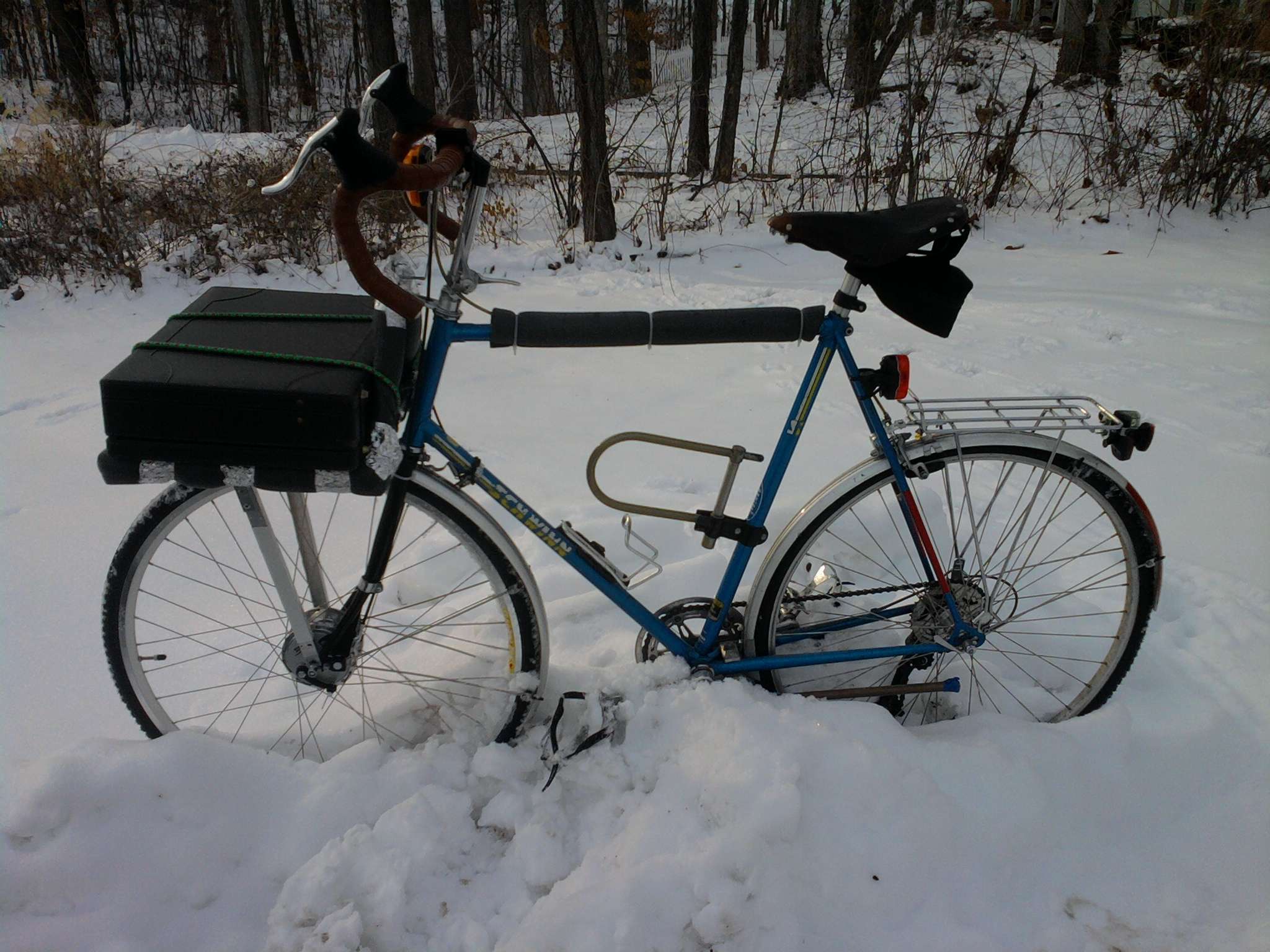
A 1984 Schwinn 4130 DB lugged frame "World Sport" from Taiwan, converted from 2 x 6 27" to 1 x 9 700C, here sporting Nokian 32 mm (30 actual) studded snows. Used as a commuter to volunteer work and for errands in all weather.
The Dyno hub:
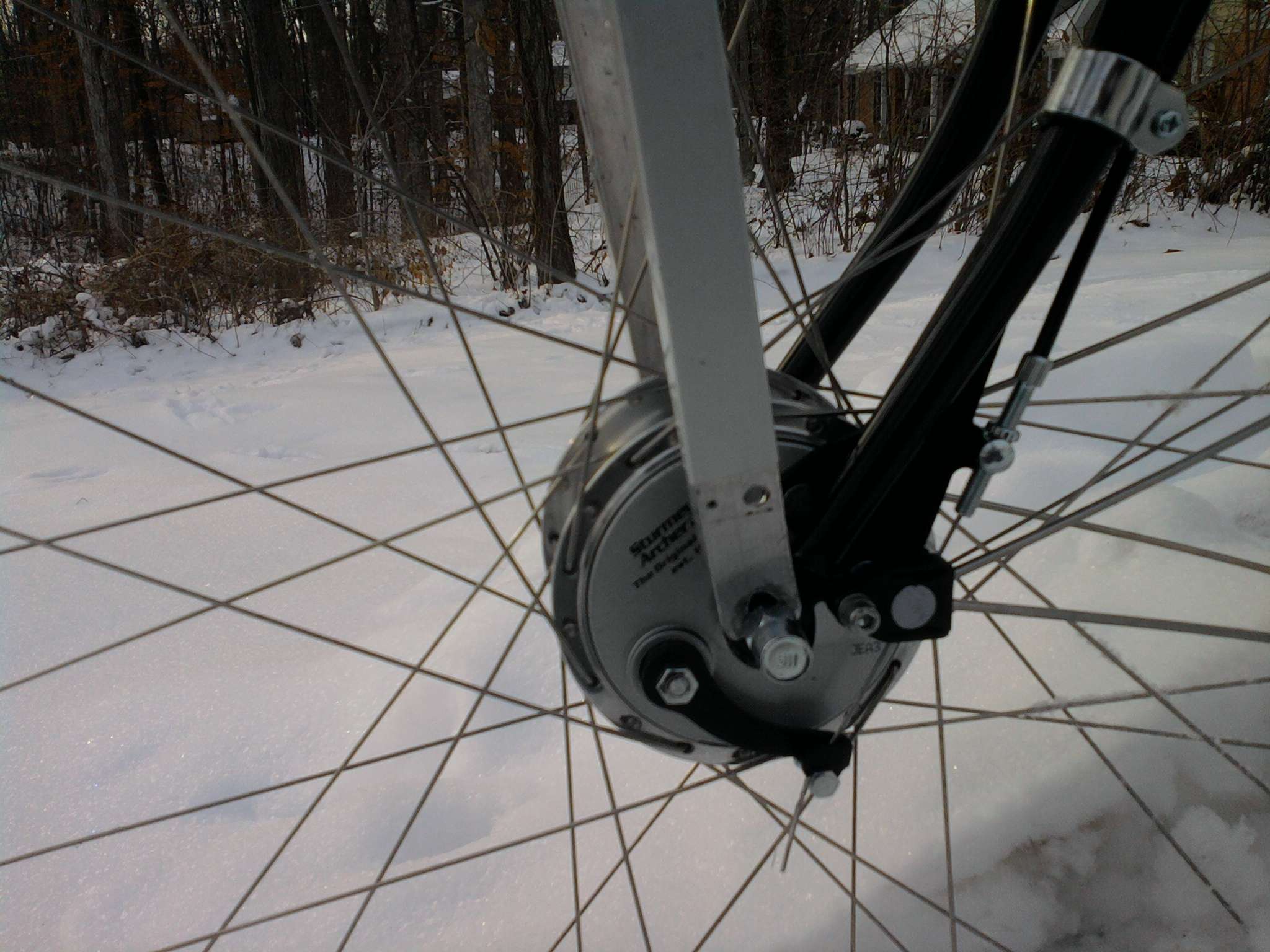
A Sturmey Archer XL-FDD (90 mm drum brake, and dyno hub) in wheel with Velocity Dyad 700 C rim, DB stainless spokes.
The circuitry in housing:

Martin's circuitboard wired according to his instructions for 3 LED and Shimano hub (supposedly Sanyo makes the dyno part of both the SA and Shimano hubs). The 3 XP-G's have lower Vf so the tuning varistor optimum was '0'. Classic 1" threaded fork and quill stem required alternate mounting and enclosure. Used a 1.5" fluorescent tube cover shortened, and its caps hold US AC plugs as strain reliefs. The leads to the hub and light are soldered to the prongs. A wire tie snugged the connection of cap and plug and silicon poting sealed it. The light is hardwired to the controller and an On/Off switch in the Dyno lead is on the bars.
The light:

A Marwi housing and 'old style' mount both from EL34. Mount rotated 90 degrees, mounted on a brakect from a previous light.

The Housing includes a copper pipe liner from a 1 1/2" copper pipe union, a copper pill from a 1" copper pipe cap. The driver was removed for conversion and a capcitor crammed in (tight fit!).

Three XP-G R5s with Carclo 10417 lenses, a fresnel lens from a plastic landscape light (above, bar shaped beam), a black 35 mm film canister cut as a shade with aluminum tape liner, manage the light beam and spill.
Report:
I run this all the time. I get good day response from drivers with and without the flashing helmet light. Even though the dyno light is not flashing its movement is accentuated on the leading edge of the front carrier so attracts eyes. A wide low beam below mid car door height extends to each side. I may need to invert the pill moving two LEDs up under the hood, but haven't videotaped it to assess the need. It is bright enough for wet pavement. I have light down to "fall over speed" so good enough there. No standlight. With the tail lights lighting up the road behind and the helmet light on, I don't need a standlight.
It mates well with my hard cut off helmet thrower light which I just rebuilt and will get its own thread. Video to come.
Brake:
The 90 mm brake was intended for cargo bikes. Adding up the weight of a dyno hub disc brake, disc brake compatible upgrade fork, and other bits and pieces it is competitive on weight and about $200 cheaper to implement on a classic road frame.
It requires a long pull lever. In a drum brake, the rear shoe activates the front as it begins to drag so you get a power asssist of sorts and the activation to the point of a front wheelie requires little hand strength. The modulation from just starting to brake to that point is very nice. Ridden in rain, snow, freezing rain it is just as good as when dry (minus tire traction issues, that is). I have had about 50 pounds of carg and that did not phase it one bit. The only aspect that took getting used to is how well it works all the time every time. I can live with that!
The bike:

A 1984 Schwinn 4130 DB lugged frame "World Sport" from Taiwan, converted from 2 x 6 27" to 1 x 9 700C, here sporting Nokian 32 mm (30 actual) studded snows. Used as a commuter to volunteer work and for errands in all weather.
The Dyno hub:

A Sturmey Archer XL-FDD (90 mm drum brake, and dyno hub) in wheel with Velocity Dyad 700 C rim, DB stainless spokes.
The circuitry in housing:

Martin's circuitboard wired according to his instructions for 3 LED and Shimano hub (supposedly Sanyo makes the dyno part of both the SA and Shimano hubs). The 3 XP-G's have lower Vf so the tuning varistor optimum was '0'. Classic 1" threaded fork and quill stem required alternate mounting and enclosure. Used a 1.5" fluorescent tube cover shortened, and its caps hold US AC plugs as strain reliefs. The leads to the hub and light are soldered to the prongs. A wire tie snugged the connection of cap and plug and silicon poting sealed it. The light is hardwired to the controller and an On/Off switch in the Dyno lead is on the bars.
The light:

A Marwi housing and 'old style' mount both from EL34. Mount rotated 90 degrees, mounted on a brakect from a previous light.

The Housing includes a copper pipe liner from a 1 1/2" copper pipe union, a copper pill from a 1" copper pipe cap. The driver was removed for conversion and a capcitor crammed in (tight fit!).

Three XP-G R5s with Carclo 10417 lenses, a fresnel lens from a plastic landscape light (above, bar shaped beam), a black 35 mm film canister cut as a shade with aluminum tape liner, manage the light beam and spill.
Report:
I run this all the time. I get good day response from drivers with and without the flashing helmet light. Even though the dyno light is not flashing its movement is accentuated on the leading edge of the front carrier so attracts eyes. A wide low beam below mid car door height extends to each side. I may need to invert the pill moving two LEDs up under the hood, but haven't videotaped it to assess the need. It is bright enough for wet pavement. I have light down to "fall over speed" so good enough there. No standlight. With the tail lights lighting up the road behind and the helmet light on, I don't need a standlight.
It mates well with my hard cut off helmet thrower light which I just rebuilt and will get its own thread. Video to come.
Brake:
The 90 mm brake was intended for cargo bikes. Adding up the weight of a dyno hub disc brake, disc brake compatible upgrade fork, and other bits and pieces it is competitive on weight and about $200 cheaper to implement on a classic road frame.
It requires a long pull lever. In a drum brake, the rear shoe activates the front as it begins to drag so you get a power asssist of sorts and the activation to the point of a front wheelie requires little hand strength. The modulation from just starting to brake to that point is very nice. Ridden in rain, snow, freezing rain it is just as good as when dry (minus tire traction issues, that is). I have had about 50 pounds of carg and that did not phase it one bit. The only aspect that took getting used to is how well it works all the time every time. I can live with that!
Last edited:


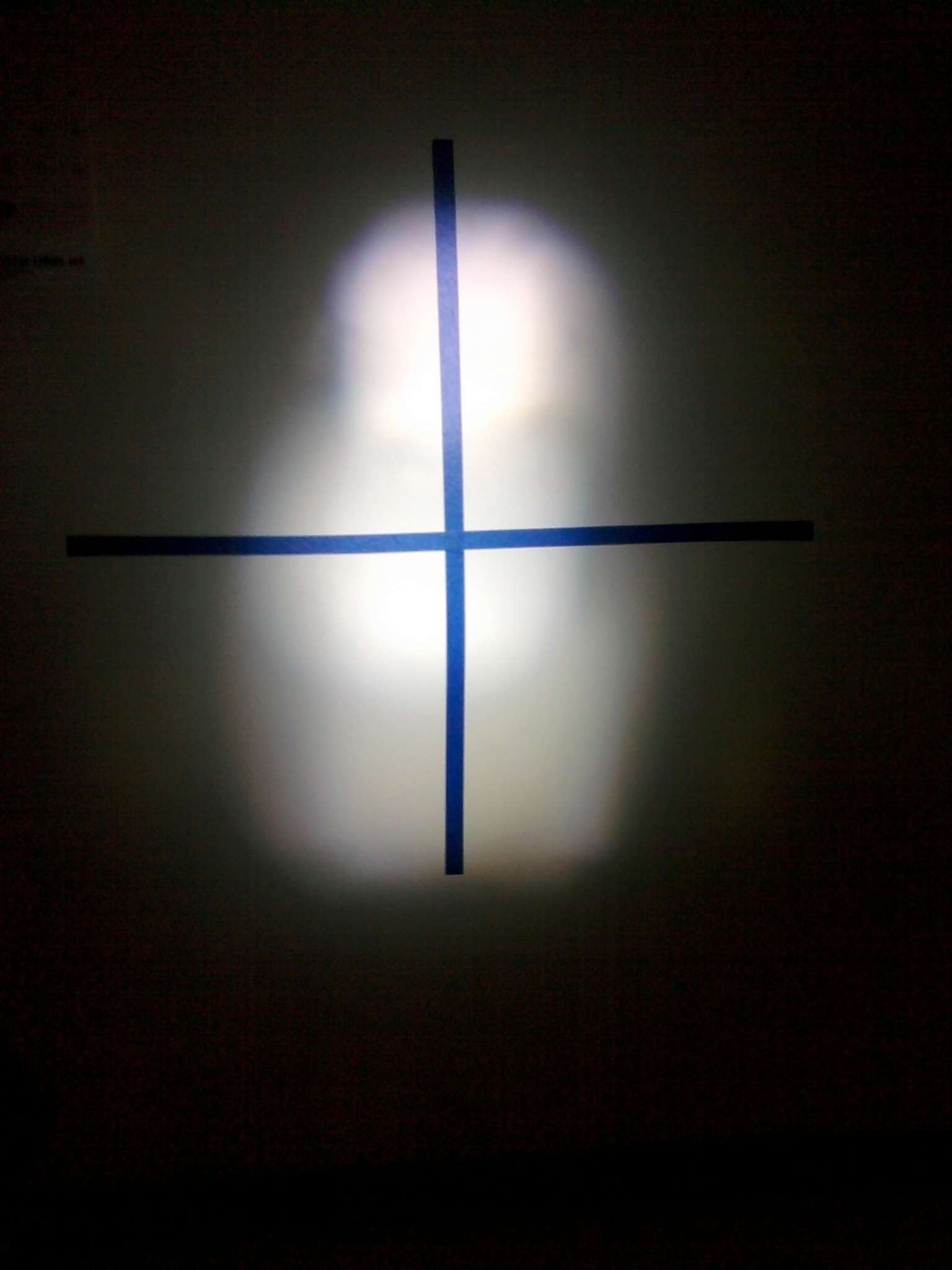
 :thinking:
:thinking: